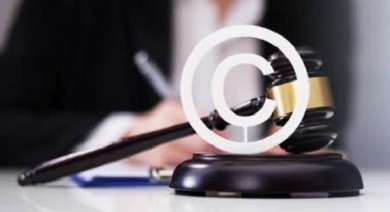IPR Management in Music Industry
Introduction
The general rule is that the first owner of copyright will be the author of the work. There are exceptions to this rule. The exception particularly relevant to the businesses and individuals we support is the exception regarding whether the author made the works in the course of employment.
Who is the Author?
For sound recordings, films, broadcasts and typographical arrangements, the following people are taken to be the author:
- The producer of a sound recording, meaning the person who made the arrangements necessary for making the sound recording.
- The producer and principal director of a film. The “producer” of a film is the person who made the arrangements necessary for making the film.
- The person making a broadcast.
- The publisher of a typographical arrangement.
For photos the situation is slightly different. Generally speaking, the person who took the photo is normally the author. However, if one person arranged and composed the subject- matter of the photo, and another person merely pressed a button to take the shot, then the author is more likely to be the person who arranged the scene. But general instructions given to a photographer as to the type of photos to be taken, or the very general acceptance that there was a team effort involved in the shoot as a whole, are deemed to be insufficient to make anyone other than the photographer the author and first owner of the copyright in the photos.
[Image Sources : Shutterstock]
Where a work is made by an employee in the course of their employment, the employer (NOT the author) will be the first owner of copyright in the work, unless agreed otherwise. The critical elements here are “employee” and work made “in the course of employment”.
Employee – this is someone employed under a contract of service or of apprenticeship (this is distinct from an independent contractor under a contract for services).
This may seem confusing but, in essence, the difference is that a contract of service describes a relationship where you have a contract with a company to perform a particular role, whereas a contract for services is an arrangement where you’re appointed as a consultant or sub-contractor to provide a specific service (e.g., a commissioned work).
When you hear a song play on the radio, you might think that there’s only one copyright for that song, owned by the artist whose voice you hear. But, in fact, that is not the case. In fact, in some parts of the world, it might be that the recording artist hasn’t earned a single cent on that radio spin. The reason is that each piece of recorded music that has two sets of copyrights: one for the musical composition, and one for the actual sound recording.
Composition
The compositional copyright covers an underlying musical composition: the arrangement of notes, melodies, and chords in a specific order. It is held by songwriters, lyricists, and composers, and managed by their music publishers (who also partially own the copyright).
Master Recording
The master copyright covers the specific sound recording, or “master recording,” that contains a particular expression of the underlying musical composition created by performing or recording artists. This copyright is held by the performing artists and, typically, their label.
Now, sometimes, the songwriter and the artists might be the same person — if we’re talking about a band that both writes and records their own music. However, even in that case, the music industry will treat the songwriter and the recording artists as two separate entities. Besides, it’s never that simple — think cover versions, samples, quoted lyrics, external producers, assisting lyricists, and so on. The structure of the music copyright behind the given song can get complicated — and quick.
For master recordings, on the other hand, according to the US Copyright Office, the copyright is created as soon as “a sound recording is fixed, meaning that the sounds must be captured in a medium from which they can be perceived, reproduced, or otherwise communicated”. This may be “in a digital track, disk, tape, or other formats”. However, while the initial copyright is created as soon as the musical work is fixed, you may need to take extra steps to ensure that the copyright is actually enforced. This depends on where you live: in Europe, no additional registration of the copyright is needed to enforce copyright protections, but in the US, you’ll need to register the copyright with the Copyright Office to get full copyright protections.
While copyright is automatically created when a work is fixed in a tangible form, that’s not the same as the copyright actually being registered. And if you want full copyright protections, then registering your copyright is a must (at least in the US).
Create a public record of your copyright
The first benefit of registering your copyright is that it’s now in the public record. You may have heard of the “poor man’s copyright,” where you mail a dated version of the copyrighted work to yourself to “prove” it’s your creation, but, tough luck: that won’t hold up in a court of law, the work must actually be registered with the US Copyright Office.
Sue for copyright infringement
The other, related benefit is that once your copyright is registered and in the public record, you can sue for copyright infringement. In other words, to actually enforce the rights conferred by music copyright, it must be registered.
Conclusion
Behind every royalty, every streaming payout, and every sync license, there’s a copyright and a copyright owner. If you ever want to earn money on musical composition or sound recording, and if you’re going to protect that right and ensure that people aren’t stealing your work, you need to know your copyright protections.
But the music copyright landscape is notoriously complicated. There are different copyrights for different parts of a musical work, with copyright ownership and royalties split between artists, songwriters, labels, and publishers (the specific nature of those splits is a subject of negotiation). Then, there is various middleman, from collection agencies to distributors, that facilitate the collection of royalties on behalf of rights holders.
It is very important for musicians and producers to understand intellectual property in order to ensure that their work is protected. This is what enables musicians to earn money from their own works, either in the original form or in altered forms. Even though it may seem tedious to get into the legal aspects of the music industry, it is necessary for musicians to make informed decisions in order to ensure they are not taken advantage of.
Author: Tanya Saraswat, in case of any queries please contact/write back to us at support@ipandlegalfilings.com or IP & Legal Filing.
References
- https://pib.gov.in/PressReleaseIframePage.aspx?PRID=1745433
- https://www.copyright.gov/engage/musicians/



